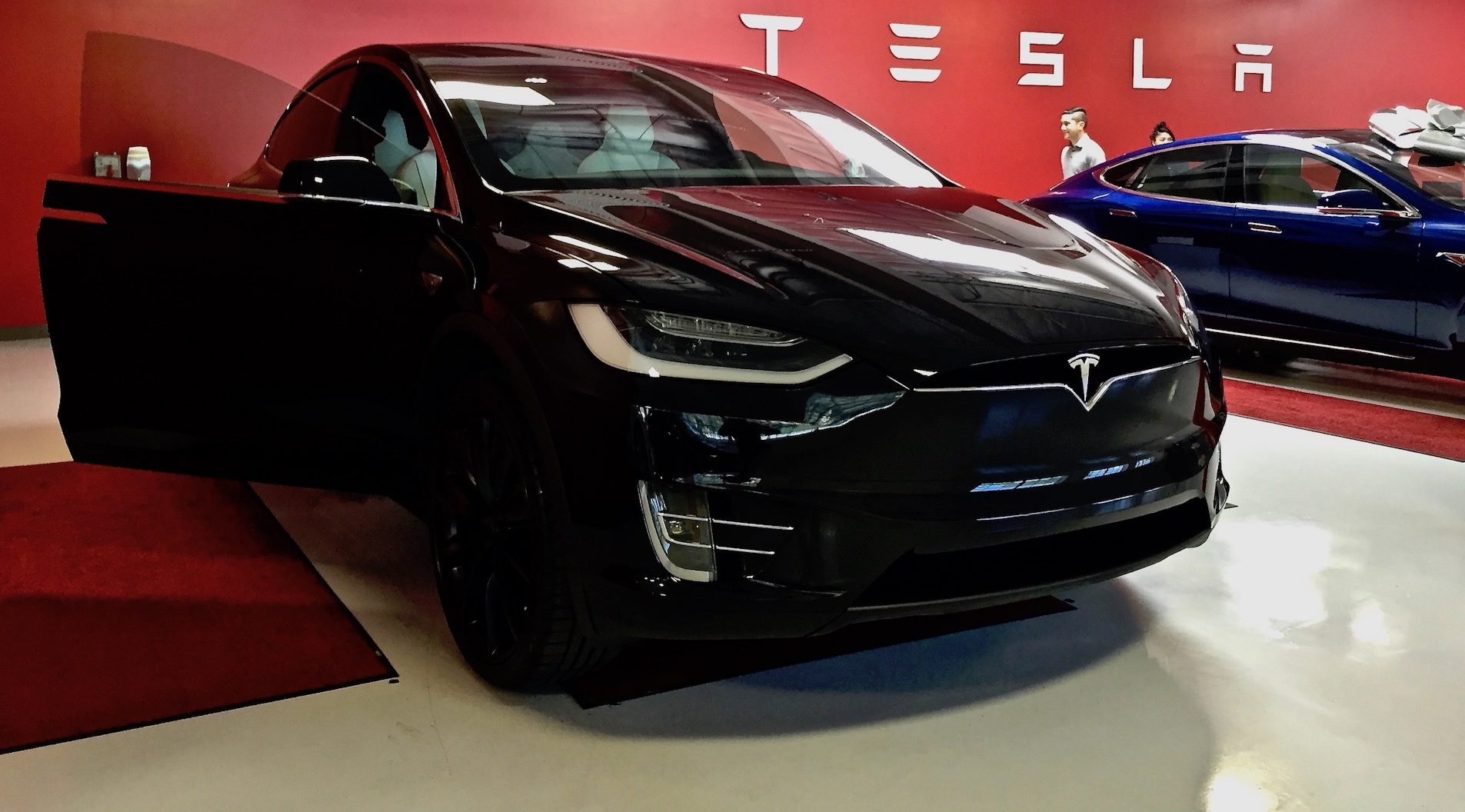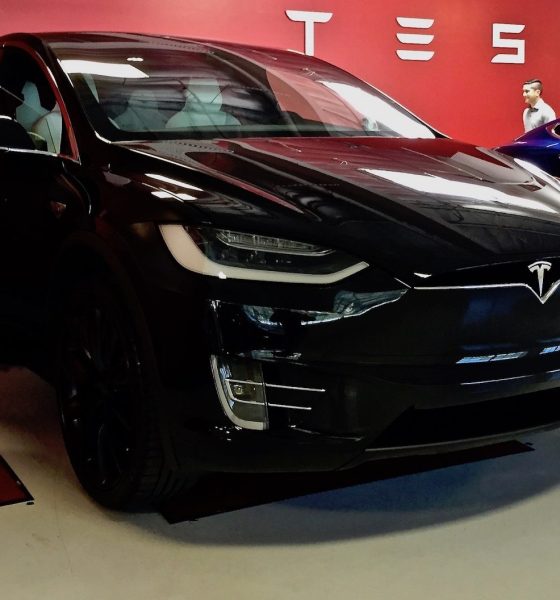

News
Tesla is looking to eliminate contracts for faster vehicle delivery process
In what appears to be yet another initiative to deliver as many of its electric cars as possible to customers, Elon Musk has announced that Tesla is trying to get rid of paper contracts completely. According to Musk, Tesla’s delivery process should be as simple as a tap on a screen. Under the system, returns for Tesla’s vehicles should be a lot simpler as well.
Musk’s Twitter update came as a response to Tesla enthusiast JD Mankovsky, who noted that his sister-in-law has been in a delivery center for hours waiting for her all-electric SUV’s contracts to be finished. Mankovsky stated that there was a backlog in the delivery center’s contract/legal approval level, causing handovers to be delayed. In classic fashion, Musk promptly responded with an idea in tow.
We’re trying to get rid of contracts completely. Should just be “tap here & you get your car”. Then, if you don’t like it for any reason, just return it like any other product.
— Elon Musk (@elonmusk) July 23, 2018
If Tesla does employ what could pretty much be described as a tap and drive system, it would be yet another way for the company to separate itself from the conventions of the traditional auto industry. Issuing and signing contracts, after all, are a well-known, time-consuming aspect of the vehicle delivery process, and it is one practice that Tesla still engages in today. By getting rid of paper contracts, Tesla will separate itself even more from traditional auto sales practices. Such a practice will also make the buying experience of Tesla’s vehicles more similar to consumer tech products than conventional cars.
In a way, using a digital signing system for its vehicles is a strategic move for Tesla. The use of digital contracts, after all, has only been growing over the years. In the United States alone, digital signatures are an option for filing tax returns over the internet, and that is valid in every state today. Tesla would likely need to adapt to additional regulations if or when it starts using digital contracts, but the transition could be done.
Elon Musk’s statement about returning vehicles if customers are not satisfied further emphasizes the idea that Tesla’s vehicles are more like computers on wheels than regular vehicles. Elon Musk has, over the years, underscored the idea that Tesla is a different breed of carmaker, not only in terms of its products but also in terms of its business practices. Returning cars to the company in a manner similar to returning an iPhone to Apple definitely falls under that category. Returned vehicles could even give the company a considerable revenue. Apple, for one, usually uses returned units to be sold later on as refurbished devices. Tesla could employ a similar strategy, opening a lineup between its brand new and CPO offerings.
Looking at Elon Musk’s tweet in the short-term, the removal of traditional paper contracts seems to be yet another way for Tesla to increase its delivery figures. The company, after all, is currently pushing for profitability this third quarter. For Tesla to do this, it would have to deliver as many cars as it can to customers, particularly higher-margin vehicles like the Model 3 Performance, the Model S P100D, and the Model S P100D. Such a system ties in perfectly with the company’s new 5-Minute Sign & Drive system for Model 3 deliveries as well.
In a way, Tesla’s efforts to expedite the deliveries of its vehicles are in the best interests of the company’s customers. Earlier this month, Tesla announced that it had sold its 200,000th electric car in the United States, triggering the phase-out period for the $7,500 tax credit granted to its customers. The tax credit is set to decrease over the next quarters and fully expire by December 2019. Thus, from this point until the end of next year, it would be up to Tesla to deliver as many vehicles as possible to ensure that its customers qualify for a federal tax credit.

News
Tesla FSD fleet is nearing 7 billion total miles, including 2.5 billion city miles
As can be seen on Tesla’s official FSD webpage, vehicles equipped with the system have now navigated over 6.99 billion miles.

Tesla’s Full Self-Driving (Supervised) fleet is closing in on almost 7 billion total miles driven, as per data posted by the company on its official FSD webpage.
These figures hint at the massive scale of data fueling Tesla’s rapid FSD improvements, which have been quite notable as of late.
FSD mileage milestones
As can be seen on Tesla’s official FSD webpage, vehicles equipped with the system have now navigated over 6.99 billion miles. Tesla owner and avid FSD tester Whole Mars Catalog also shared a screenshot indicating that from the nearly 7 billion miles traveled by the FSD fleet, more than 2.5 billion miles were driven inside cities.
City miles are particularly valuable for complex urban scenarios like unprotected turns, pedestrian interactions, and traffic lights. This is also the difference-maker for FSD, as only complex solutions, such as Waymo’s self-driving taxis, operate similarly on inner-city streets. And even then, incidents such as the San Francisco blackouts have proven challenging for sensor-rich vehicles like Waymos.
Tesla’s data edge
Tesla has a number of advantages in the autonomous vehicle sector, one of which is the size of its fleet and the number of vehicles training FSD on real-world roads. Tesla’s nearly 7 billion FSD miles then allow the company to roll out updates that make its vehicles behave like they are being driven by experienced drivers, even if they are operating on their own.
So notable are Tesla’s improvements to FSD that NVIDIA Director of Robotics Jim Fan, after experiencing FSD v14, noted that the system is the first AI that passes what he described as a “Physical Turing Test.”
“Despite knowing exactly how robot learning works, I still find it magical watching the steering wheel turn by itself. First it feels surreal, next it becomes routine. Then, like the smartphone, taking it away actively hurts. This is how humanity gets rewired and glued to god-like technologies,” Fan wrote in a post on X.
News
Tesla starts showing how FSD will change lives in Europe
Local officials tested the system on narrow country roads and were impressed by FSD’s smooth, human-like driving, with some calling the service a game-changer for everyday life in areas that are far from urban centers.

Tesla has launched Europe’s first public shuttle service using Full Self-Driving (Supervised) in the rural Eifelkreis Bitburg-Prüm region of Germany, demonstrating how the technology can restore independence and mobility for people who struggle with limited transport options.
Local officials tested the system on narrow country roads and were impressed by FSD’s smooth, human-like driving, with some calling the service a game-changer for everyday life in areas that are far from urban centers.
Officials see real impact on rural residents
Arzfeld Mayor Johannes Kuhl and District Administrator Andreas Kruppert personally tested the Tesla shuttle service. This allowed them to see just how well FSD navigated winding lanes and rural roads confidently. Kruppert said, “Autonomous driving sounds like science fiction to many, but we simply see here that it works totally well in rural regions too.” Kuhl, for his part, also noted that FSD “feels like a very experienced driver.”
The pilot complements the area’s “Citizen Bus” program, which provides on-demand rides for elderly residents who can no longer drive themselves. Tesla Europe shared a video of a demonstration of the service, highlighting how FSD gives people their freedom back, even in places where public transport is not as prevalent.
What the Ministry for Economic Affairs and Transport says
Rhineland-Palatinate’s Minister Daniela Schmitt supported the project, praising the collaboration that made this “first of its kind in Europe” possible. As per the ministry, the rural rollout for the service shows FSD’s potential beyond major cities, and it delivers tangible benefits like grocery runs, doctor visits, and social connections for isolated residents.
“Reliable and flexible mobility is especially vital in rural areas. With the launch of a shuttle service using self-driving vehicles (FSD supervised) by Tesla in the Eifelkreis Bitburg-Prüm, an innovative pilot project is now getting underway that complements local community bus services. It is the first project of its kind in Europe.
“The result is a real gain for rural mobility: greater accessibility, more flexibility and tangible benefits for everyday life. A strong signal for innovation, cooperation and future-oriented mobility beyond urban centers,” the ministry wrote in a LinkedIn post.
News
Tesla China quietly posts Robotaxi-related job listing
Tesla China is currently seeking a Low Voltage Electrical Engineer to work on circuit board design for the company’s autonomous vehicles.

Tesla has posted a new job listing in Shanghai explicitly tied to its Robotaxi program, fueling speculation that the company is preparing to launch its dedicated autonomous ride-hailing service in China.
As noted in the listing, Tesla China is currently seeking a Low Voltage Electrical Engineer to work on circuit board design for the company’s autonomous vehicles.
Robotaxi-specific role
The listing, which was shared on social media platform X by industry watcher @tslaming, suggested that Tesla China is looking to fill the role urgently. The job listing itself specifically mentions that the person hired for the role will be working on the Low Voltage Hardware team, which would design the circuit boards that would serve as the nervous system of the Robotaxi.
Key tasks for the role, as indicated in the job listing, include collaboration with PCB layout, firmware, mechanical, program management, and validation teams, among other responsibilities. The role is based in Shanghai.
China Robotaxi launch
China represents a massive potential market for robotaxis, with its dense urban centers and supportive policies in select cities. Tesla has limited permission to roll out FSD in the country, though despite this, its vehicles have been hailed as among the best in the market when it comes to autonomous features. So far, at least, it appears that China supports Tesla’s FSD and Robotaxi rollout.
This was hinted at in November, when Tesla brought the Cybercab to the 8th China International Import Expo (CIIE) in Shanghai, marking the first time that the autonomous two-seater was brought to the Asia-Pacific region. The vehicle, despite not having a release date in China, received a significant amount of interest among the event’s attendees.








